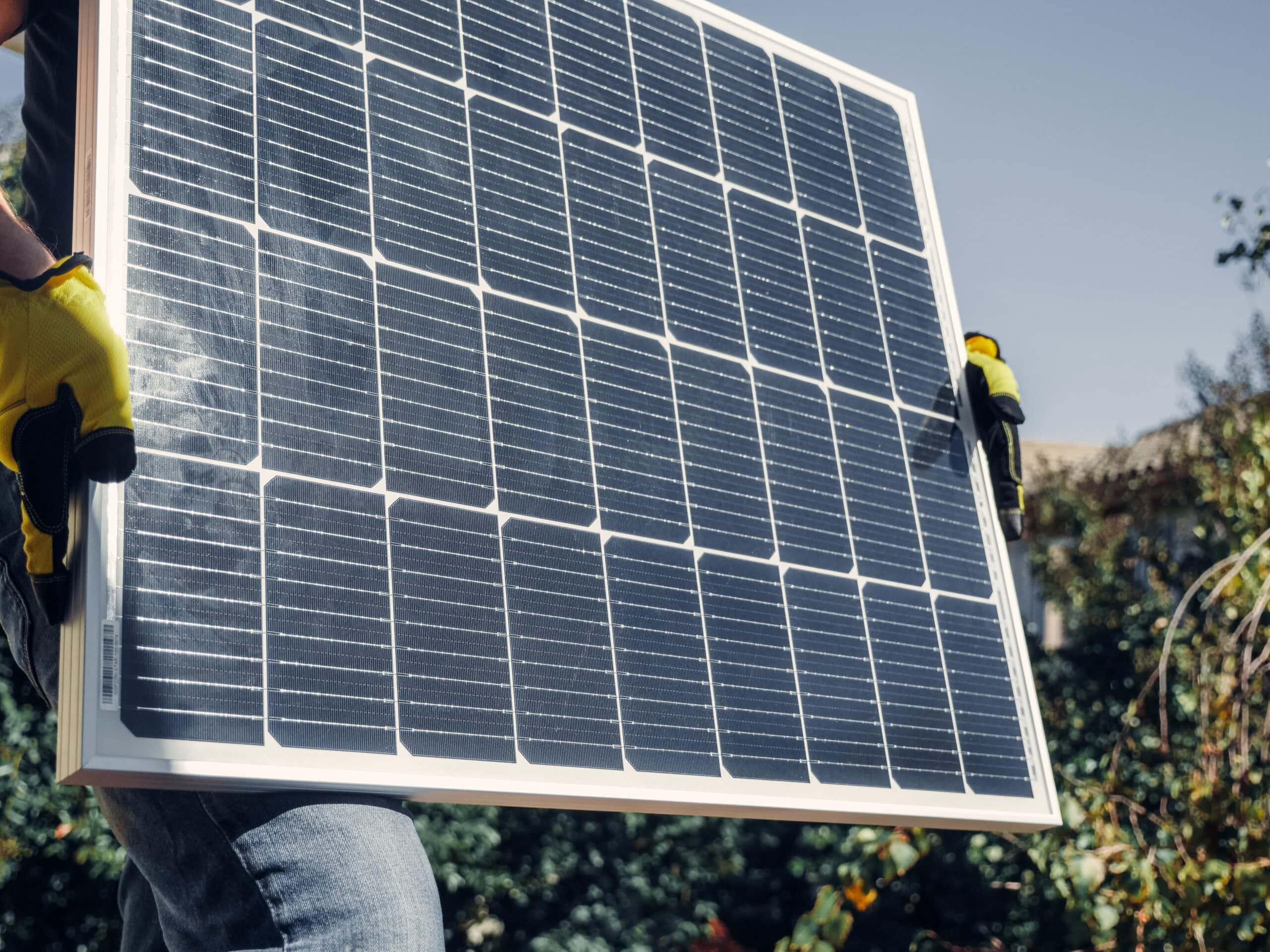
Photovoltaic plants: technology to harness the energy the Sun gives us
07 of November of 2022
It gives us light, and warmth and makes life possible. Besides, for every hour that passes, the Earth receives enough energy from the Sun to supply all the energy used worldwide during all 12 months of 2020. This fact helps highlight the potential of committing to renewable energies, especially solar energy.
Nowadays, we still don’t have the technology to take full advantage of the energy that comes to us from the Sun, but yields from photovoltaic installations are actually increasing. In 1883, when the first photovoltaic cell was created, its efficiency was only 1%. Now, it’s at 24%, and some laboratory tests have even put that figure at 47%.
We’re taking advantage of this improvement and have started working on a project to build a photovoltaic solar power plant at El Berrocal in Seville. With it, Ferrovial is entering the world of what more and more people are considering the energy of the future.
From photons to electric current
A photovoltaic plant is a generation facility of renewable energy that transforms the energy the Sun offers us into electricity. This is possible thanks to solar panels: when photons hit them, these modules create a potential difference between their terminals, creating an electric current.
These photovoltaic plant facilities have different parts. The first are the aforementioned solar panels, or photovoltaic modules, which are responsible for generating a continuous electric current after receiving the Sun’s light. The next parts that come into play in the path that this energy follows are inverters: this equipment transforms direct current into alternating current.
The next step is taken by the transformation centers, which raise the electrical voltage. Before passing through these centers, it is a low voltage (between 600 and 800 volts). Once elevated, it is at medium voltage (about 30 kilovolts). Finally, the electrical substations increase it to what we consider high voltage (around 66, 132, 220 kilovolts or higher). Once this is done, the current is then ready to be transported through power lines.

Structures that harness Sun’s energy
To make all this possible, it is necessary to have structures that can support photovoltaic modules and give them the tilt needed to capture the Sun’s energy. These structures can be fixed (not moving, such as the panels we commonly see on private homes) or have tracking.
The latter change their tilt throughout the day and the year to get the most energy possible from the Sun. Those placed on a single axis are aligned in the north-south direction and move from east to west. Those that move on two axes offer even better performance, as they’re placed as perpendicular to the Sun as possible. To understand how they move, we can imagine a sunflower’s rotation throughout the day and the year.
Both single-axis and two-axis tracking structures follow the movement of our Sun thanks to information derived from solar equations. The position of the Earth, the latitude of their location, their coordinates, and the time of year, among other factors, determine their position at any given time.
Nowadays, the most commonly used structures are single-axis. They are almost as affordable as fixed ones and aren’t as expensive as double-axis ones. The El Berrocal project, for example, will have structures of this kind.
In search of efficiency: how to choose the location of a photovoltaic plant?
When choosing an optimal location for a photovoltaic plant, different factors come into play. The first are related to the viability of the project itself:
- Proximity to a connection point: it is highly important for the land where the plant will be located to be close to substations or lines where it can send energy. Otherwise, transmission costs start to climb.
- The number of relationships with third parties: the number of procedures and possible complications is reduced with fewer people, organizations, or entities affected by the project’s development.
- Possibility of leasing the plots: it is essential that the place can be used for photovoltaic plant facilities.
Other factors have a technical nature and directly influence the project’s profitability:
- The terrain: flatter, more level terrain reduces the amount of earthwork needed. It’s most recommendable for the land not to have slopes higher than 8%.
- The complexity of plots in geotechnical terms: it is best to avoid rocky areas (where it may even be necessary to use dynamite), archaeological sites (which can slow down or halt the project), expansive clays, or water tables, for example.
- The closeness between the plots: having plots at a distance from one another increases the costs of the project, as the price of communications and power lines skyrockets, among other factors. Therefore, it is ideal for them to all be located in the same place.
- The amount of shade: there should be no objects or elements that interfere with capturing sunlight.
- The number of hours of sunshine: it is best to choose areas of the world with the highest levels of sunlight.
In this case, Spain is an excellent location for building photovoltaic plants: Spain has an annual irradiance of 1800 kilowatt hours for every square meter. Within the country, locating the projects in the southern strip is much more profitable than in the north, as there is a difference of almost 20% in solar irradiation.
The El Berrocal estate is located in Seville, one of the areas with the most solar irradiation in Spain. This is the company’s first foray into the photovoltaic solar energy sector, which has a promising future. In the long term, the goal is to continue along the path of renewable energies and commit to projects in other countries where, as is the case in Spain, the solar energy sector is growing exponentially.





1 comment
John Martin
26 of January of 2023
We have plans to reduce your energy. Which will reduce your energy cost to a great extent. In which there are many types of planes that you can choose. You will get 15% discount if you sign up in our website. So feel free to visit our website.https://usenergydiscounts.com/